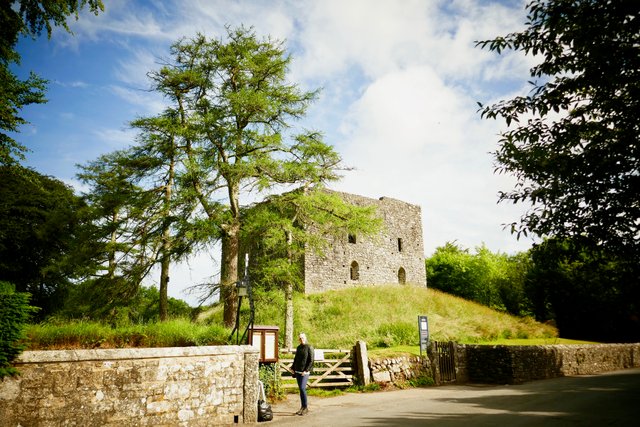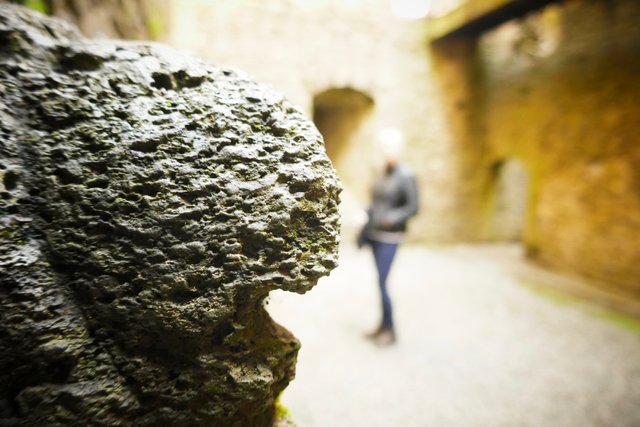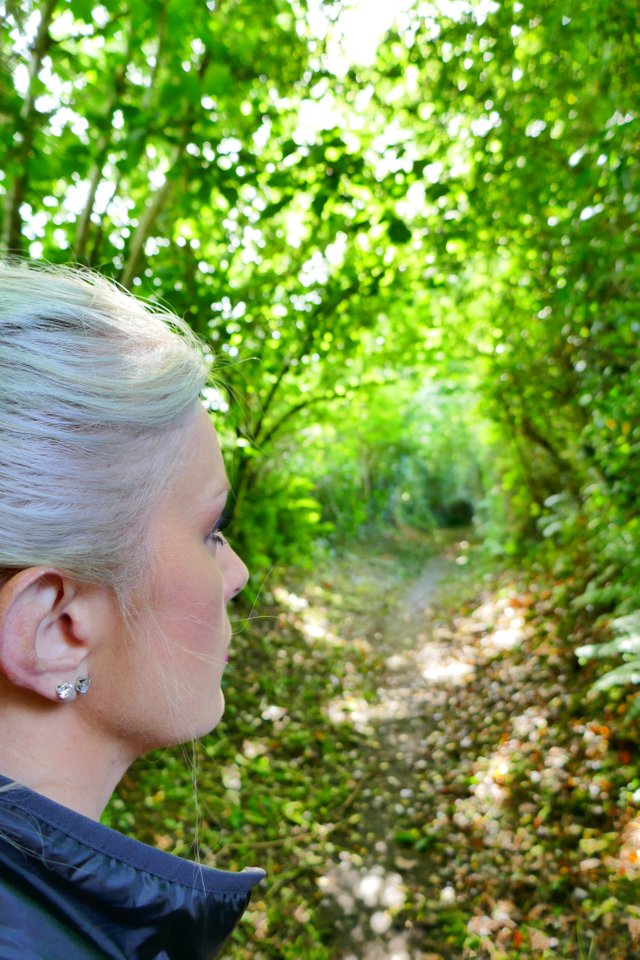Vikings | Normans | Warriors | Peasants | Miners | Kings

I like looking backwards through time and find historical events, places and people much more interesting than what's going on right now. It's rare that a week goes by in which I haven't researched or studied something to do with life in the past and whilst there's no gain, other than the enjoyment of seeking and learning, it's something I'm incredibly passionate about. I research just for the sake of it and often I'm fortunate enough to travel to the places I research. This post brings you one such journey.
This time-warp finds me in Lydford situated in the country of Devon, south-western England. Devon is home to such attractions as Dartmoor National Park, Exeter, the Jurassic Coast and Torquay however it's to the small town of Lydford, eleven kilometres north of Tavistock, that this journey takes me. It's a pretty town, laid out on a grid pattern, of not much more than 400 people today however was once one of the four most important towns in Devon as recorded in the 9th century.
It is surmised that the tin trade primarily funded the towns' prosperity and by the 10th century it even boasted its own mint and paid as much in taxes to the king as did Totnes and Barnstaple. Geographically it held a position of impressive natural strength on a triangular-shaped promontory with protection on two sides by deep river-valleys and an earthen rampart on the third side, the rampart can still be seen today. It is suspected that these strong natural defences are the reason a vigorous Viking attack was repelled in the year 997.
The reason I went to Lydford was to see the castle which you can see pictured above and below. We were on our way to Dartmoor National Park and Lydford was on the way.
In 1068 William the Conqueror laid siege and finally captured Exeter sparking the construction of a defensive earthwork on the south-west tip of the promontory mentioned above at Lydford. Remains of wooden buildings behind a protective crescent-shaped earth and wooden rampart have been found at the site of this very early Norman castle. Of course the buildings are no longer, although one get's a sense of what it must have been like within this early structure, looking out over the countryside for invaders, fearing for one's life, and yet stoically manning the defences to protect one's family.
It's thought that the early castle was abandoned as insufficient quite quickly however the town of Lydford had increased its stock as the administrative-centre of the Dartmoor forest and the lucrative rights it enjoyed as a royal jurisdiction.
King John ordered the construction of a new tower in 1194 with the plan of housing offenders against stannary and forest laws there. Stannary law is the law that King John chartered governing tin mining in Cornwall and Devon. It is the oldest law to be incorporated into the English legal system although doesn't have much practical relevance now. The stannaries were administered from Lydford.

This image shows the castle rising above the small hill. The town church sits to the left out of shot with the early Norman castle behind that.
Stannary-law offenders were held at the castle right through the Middle Ages and through to the 18th century with the best known of them being Richard Strode, the MP for Plymouth. He was a tin miner and had the gall to complain about the mining debris in the moorland rivers silting up the Plymouth harbour! He described his accommodation as:
"one of the most annoious, contagious and detestable places wythin this realme."
The year 1650 found the castle described as "very much in decay" with floors caved in and only the roof intact. Some attempt was made in 1716 and 1733 to arrest the decay however the early 19th century saw it in almost complete ruin.

There's not much of the castle left but the walls. Once can walk up into it though and some stairs have been installed so one can reach up to the upper levels. It's from there one can see the defensive earthworks behind and also get a feeling of wht it must have been like to be incarcerated here.
The image above shows my wife standing in the centre of the castle on ground level. I focussed on the stone of the wall rather than her...The castle felt oppressive, almost as if the emotion and woe from countless incarcerated souls has seeped into the rock embedding itself forever within the stone and immortalising their suffering. Walking around the castle one is left with a gloomy, somewhat morose, feeling; It's sombre and almost foreboding. I didn't feel odd, like evil existed there, only...Well, it left me feeling sorrowful. It's an oppressive place but one I'm pleased to have visited.

We walked around the area, the early Norman castle as mentioned earlier and even found a spring down a meandering and heavily-wooded path which is where the very early inhabitants of the town collected fresh drinking water. You can see the pathway to the left. The spring was located just outside the small town and the pathway leading past was one of the main entrances to the town itself. It's now overgrown with trees and shrubs. The elusive roe deer can often be seen along this pathway.
It was a pleasant walk interrupted only by the birds and the occasional squirrel scampering from tree to tree. We stopped and just listened for a while and spoke quietly about what it must have been like 950 years ago, what sounds we may have heard; The hammer of axe on wood, the scrape of rake through earth, laughter of young children playing or the soft voices of a young couple seeking a private intimate place in the woods...The roar of Viking battle-cries, clash of steel on steel and the thud and crack of steel rending flesh and bone...The town has seen it all, and continues to do so.
Our stay in Lydford was brief, only hours, but we were left with an endearing memory of a place that has stood witness to generation after generation of emotions and experiences: Struggle, joy, woe, fear and triumph. It has outlived them all; Norman and Viking, warrior, peasant, miner and king alike and despite the ravages of time, the castle still bears witness and keeps watch from its place on the hill.
I wasn’t a big fan of cultural outings as a kid but castles are always cool to see at any age
Posted using Partiko iOS
Castles are right? We saw and visited many both ruins and working castles. Never got sick of them.
Posted using Partiko Android
Takes no small hamlet to rival Totnes and Barnstaple. I tip my hat and take my leave.
I liked Barnstaple, never went to Totnes but back in the day they were thriving towns. Must have been interesting living in those times.
Posted using Partiko Android
Congratulations! Your high-quality travel content was selected by @travelfeed curator @elsaenroute and earned you a partial upvote. We love your hard work and hope to encourage you to continue to publish strong travel-related content.
Thank you for being part of the TravelFeed community!
Learn more about our travel project by clicking on the banner above and join our community on Discord.
I really need to get up to the the UK for some castle routes to enjoy. I love the background of history as well. Great stuff!
Posted using Partiko iOS
The history is off the chain there man. So amazing. We saw do many castles and ruins and didn't get tired of it. Each has its own story.
Posted using Partiko Android
Hi @galenkp!
Your post was upvoted by @steem-ua, new Steem dApp, using UserAuthority for algorithmic post curation!
Your UA account score is currently 4.446 which ranks you at #2188 across all Steem accounts.
Your rank has improved 9 places in the last three days (old rank 2197).
In our last Algorithmic Curation Round, consisting of 211 contributions, your post is ranked at #41.
Evaluation of your UA score:
Feel free to join our @steem-ua Discord server